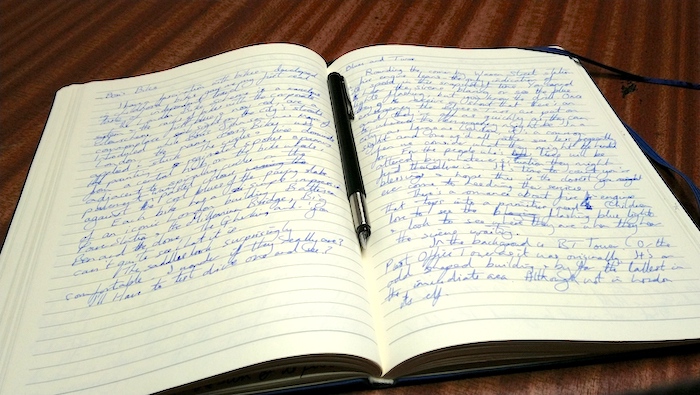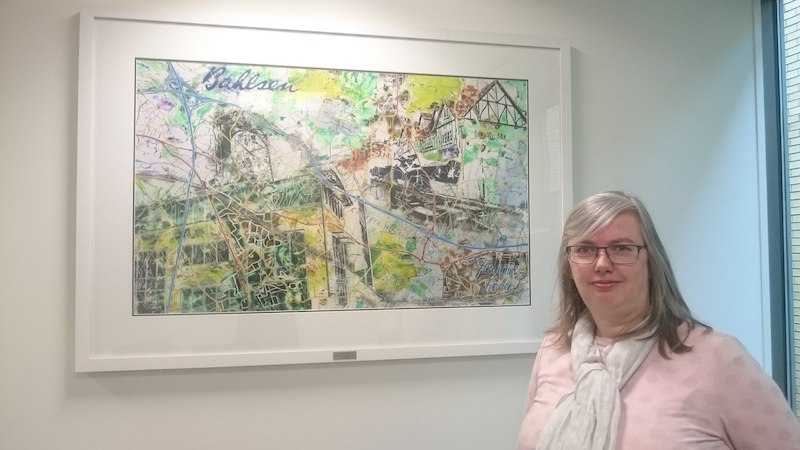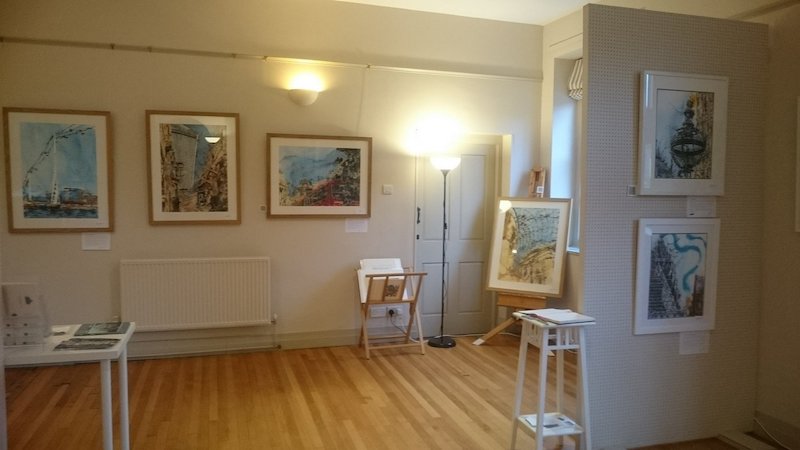In the spring of 2018, Cathy Read took my Magnetic You course. This class isn’t for the faint of heart because it involves a lot of writing. And, if you’re like most of my clients, you really would prefer to get by without more writing.

We work on your artist statement, bio, about page, stories about your art, and your branding. All of your hard work leads to a cohesive presentation that makes you more attractive to buyers, curators, and collectors.
One of the most important lessons in Magnetic You involves meditating on your art. You read that right. Meditating on your art. I insist that art speaks when you give it the time and space to tell you its story. Then you have to capture that story in a journaling process.
Cathy wrote pages and pages about a new body of work. Then she got an idea from another lesson to leverage all of that writing she had done.

The writing didn’t just stay in a notebook or in a file somewhere in the dark depths of her computer. Nooooo. She put it to work and turned her written stories into audio for an exhibition.
The leap Cathy took from written word to audio involves a different way of thinking. It’s much like how museums consider programming their shows. They don’t simply put up the art along with nearby labels. They have docents who lead tours, scholars who give presentations, activities to expand on a theme, and audio for telling stories.
Why shouldn’t artists do the same when they have their own solo shows?
I asked Cathy all about the process and experience in this episode of the podcast.
Listen Now
Music by Wildermiss.
Highlights
- Cathy’s career path starting with caricatures and developing into architectural painting with abstract elements. (2:40)
- How Cathy developed the interest in architecture which informs her work. (4:22)
- Her experience with the meditation exercises she learned in the Magnetic You class. (7:10)
- The decision Cathy made to dictate her meditations. (9:20)
- The detailed process she underwent of writing then speaking the words that helped her clarify her message about the work and why she feels it makes her descriptions more interesting. (11:55)
- How Cathy got the idea to include the audio in her solo exhibition using lessons from Magnetic You on how to engage your audience. (14:35)
- The process of recording the audio and how she perfected it. (15:40)

Label explaining how to use the QR codes within Cathy’s exhibition. - How she made the audio available at her exhibition using a QR code, and other ways she leveraged the recordings on her blog. (19:00)
- Visitor experience with the audio recordings and hiccups they encountered. (23:20)
- Why Cathy thinks its valuable for viewers to hear her voice. (24:50)
- What she learned and what she will do differently next time. (26:25)
- My suggestion for Cathy to encourage more engagement with the audio from visitors. (28:30)
- How Cathy plans to continue her meditation process for upcoming shows. (30:40)
- The full list of what she’s working on now. (32:00)
Mentioned
Magnetic You, my online course that started the whole process for Cathy
How to make a QR Code
The Stables in The Courtyard at Claydon Estate, exhibition venue
Google Keep

About My Guest
Cathy Read re-imagines iconic architecture using explosive, colorful drops and trails of paint, held together with a structure of white lines. Inspired by looming and dramatic architecture, she draws on influences from various nearby cities.
She lives near Buckingham, England, and is a member of the Society of Women Artists, receiving their Barbara Tate Memorial Award in 2015. Cathy has also shown with the Royal Watercolour Society and the Royal Institute of Painters in Watercolour in London.

Cathy appeared as a contestant on Sky Arts Landscape Artist of the Year in 2016, returning as a wildcard in 2017. The same year, she was shortlisted for Artist and Illustrators Artist of the Year and received the Wild and Tame award.
Her work can be found in collections in the Canada, Africa, New Zealand, and the U.K., including the Ashmolean Museum in Oxford.
Follow Cathy on Instagram @CathyReadArt.
Music by Wildermiss.
This episode is sponsored my signature business-building program, the Art Career Success System, which Magnetic You is a part of.
All of the lessons you learn in the Art Career Success System are tasks you will do over and over again throughout your art business and career. That’s why it’s a SYSTEM.
In the ACSS you will build a strong foundation using my video and audio lessons, worksheets, and transcripts. And you will be part of a community of artists who are forward-thinking and forward-moving.



11 thoughts on “The Art Biz ep. 43: Turning Journaling into Audio for Your Art Show with Cathy Read”
This is a bit dissappointing. The sound quality is just not up to par. AS an old TV producer , it always surprises me that published audio is done with no base line. The sound of Cathie is hollow and echoish and that with her strong “english” accent makes it hard to understand. I gave up forcing my brain to hear…too bad. Next time please make sure that the sound from Alyson (which at the beginning BTW was exactly what I had just read- a bit redundant…!but was clear matches the sound of the interviewee.
Thanks for trying, Colette. I wish I could control the audio of all my guests, but it isn’t possible. Hopefully the timestamps help you find sections that might be useful.
Thanks for trying Collette. Sorry you found it hard to listen to. I would love to hear your tips on how to improve sound on a recording.
Hi Collette and Alyson. I just listened to the podcast on my phone and had no problems. The podcast sounded crystal clear and I had no problem understanding Cathy’s English accent. Perhaps the interview sounds different on different devices. Well done Cathy and what a great idea creating audio. It is something I had thought of too but did not even know where to begin. Wishing you the very best of success from New Zealand. Thank you Alyson for a wonderful interview I greatly enjoyed.
Jane: Thanks for letting me know! I’m glad you were able to understand it clearly. More importantly, I hope it inspires you to do that audio.
Thank you Jane! Give it a go, you might surprise yourself.
The podcast sounded fine to me on my laptop in the UK 😊 This is the second interview by Alyson I’ve listened to – I love that you show genuine interest and give your interviewees time to talk. Always interesting to hear about process and how things have developed artistically and career-wise. I had got a bit stuck with Magnetic You (it’s harder to do than you’d think!) but this has inspired me to jump in again and see what words, etc I can discover, and hopefully find new direction in my work too. I look forward to hearing more podcasts (would hate to speak on one myself, but love listening to them, lol!)
Thanks for listening, Melanie! Can’t tell you how happy I am that this inspires you to move forward with your coursework in Magnetic You.
Thank you Melanie, stick with it. It gets easier the more you do. Don’t expect perfection at the first attempt. The hardest part is getting something down. Once you start, you can improve with each edit. Likewise the recording, be prepared to have many attempts before they start to sound and feel natural. You can always erase the ones you don’t like.
I enjoyed this interview and learning all the steps Cathy took to create audio reflections on her paintings. It is something I have considered and now I have some insight into what might be involved. (A lot of work!)
It might seem like a lot of work, but bear in mind I did it in stages. If you break it down, it’s much less daunting. I only felt rushed because I decided to do the audios nearer the deadline than I would advise. If I’d thought about them when I started planning the exhibition, they would have been more manageable. Also, the first few recordings are the hardest, as you have so much to remember. Don’t feel it needs to be perfect. The more you do, the easier they become.